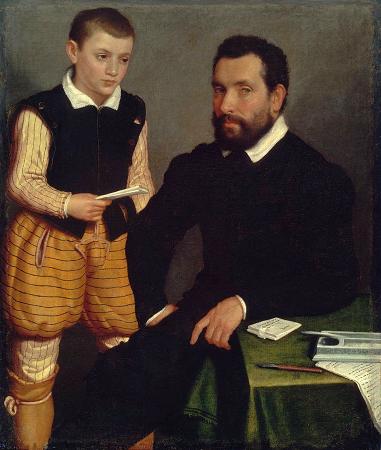Family Portrait. In human society, family is a group of people related either by consanguinity or affinity. The purpose of families is to maintain the well-being of its members and of society. Ideally, families would offer predictability, structure, and safety as members mature and participate in the community. In most societies, it is within families that children acquire socialization for life outside the family, and acts as the primary source of attachment, nurturing, and socialization for humans. Additionally, as the basic unit for meeting the basic needs of its members, it provides a sense of boundaries for performing tasks in a safe environment, ideally builds a person into a functional adult, transmits culture, and ensures continuity of humankind with precedents of knowledge. Anthropologists generally classify most family organizations as matrifocal; patrifocal; conjugal; avuncular; or extended. Members of the immediate family may include spouses, parents, grandparents, brothers, sisters, sons, and daughters. Members of the extended family may include aunts, uncles, cousins, nephews, nieces, and siblings-in-law. Sometimes these are also considered members of the immediate family, depending on an individual's specific relationship with them, and the legal definition of immediate family varies. Sexual relations with family members are regulated by rules concerning incest such as the incest taboo. The field of genealogy aims to trace family lineages through history. The family is also an important economic unit studied in family economics. The word families can be used metaphorically to create more inclusive categories such as community, nationhood, and global village. One of the primary functions of the family involves providing a framework for the production and reproduction of persons biologically and socially. This can occur through the sharing of material substances; the giving and receiving of care and nurture; jural rights and obligations; and moral and sentimental ties. Thus, one's experience of one's family shifts over time. From the perspective of children, the family is a family of orientation: the family serves to locate children socially and plays a major role in their enculturation and socialization. From the point of view of the parent, the family is a family of procreation, the goal of which is to produce, enculturate and socialize children. However, producing children is not the only function of the family; in societies with a sexual division of labor, marriage, and the resulting relationship between two people, it is necessary for the formation of an economically productive household. Christopher Harris notes that the western conception of family is ambiguous and confused with the household, as revealed in the different contexts in which the word is used. Olivia Harris states this confusion is not accidental, but indicative of the familial ideology of capitalist, western countries that pass social legislation that insists members of a nuclear family should live together, and that those not so related should not live together; despite the ideological and legal pressures, a large percentage of families do not conform to the ideal nuclear family type. Further information: Fertility factor The total fertility rate of women varies from country to country, from a high of 6.76 children born/woman in Niger to a low of 0.81 in Singapore. Fertility is low in most Eastern European and Southern European countries; and high in most Sub-Saharan African countries. In some cultures, the mother's preference of family size influences that of the children through early adulthood. A parent's number of children strongly correlates with the number of children that their children will eventually have. Although early western cultural anthropologists and sociologists considered family and kinship to be universally associated with relations by blood later research has shown that many societies instead understand family through ideas of living together, the sharing of food and sharing care and nurture.
more...














